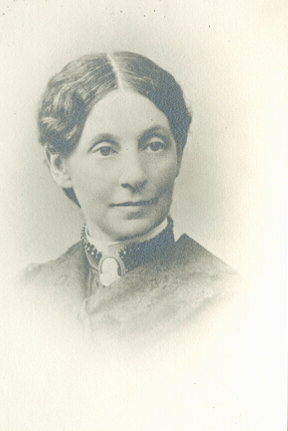Helen Pitts Douglass facts for kids
Quick facts for kids
Helen Pitts Douglass
|
|
|---|---|
 |
|
| Born |
Helen Pitts
1838 Honeoye, New York, U.S.
|
| Died | 1903 (aged 64–65) Washington, D.C., U.S.
|
| Occupation | Suffragist |
| Spouse(s) | |
| Relatives | Douglass family (by marriage) |
Helen Pitts Douglass (1838–1903) was an American woman who worked for women's right to vote. She is well-known as the second wife of Frederick Douglass, a famous abolitionist. Helen also started the Frederick Douglass Memorial and Historical Association, which later became the Frederick Douglass National Historic Site, a place where people can learn about his life.
Contents
Helen's Early Life and Schooling
Helen Pitts was born in Honeoye, New York, in 1838. Her parents were active in movements to end slavery (abolitionists) and to gain voting rights for women (suffragists). She even had famous ancestors, John Alden and Priscilla Alden, who came to America on the Mayflower. Helen graduated from Mount Holyoke College in 1859. After finishing school, she went back to her parents' home.
After the American Civil War, Helen taught at the Hampton Institute. This school helped educate Black men and women. While teaching, she spoke out against people who were mean to her students. This led to some local residents being arrested. In 1882, Helen moved to Uniontown in Washington, D.C.. She lived next door to Frederick Douglass's home, called Cedar Hill.
Helen's Work for Change
Helen was very active in the women's rights movement. She helped edit a newspaper called The Alpha in Washington with Caroline B. Winslow. In 1882, Frederick Douglass hired Helen to work as a clerk in his office. He was writing his autobiography, Life and Times of Frederick Douglass, and often gave speeches. Helen helped him a lot with his important work.
Marriage to Frederick Douglass
Frederick Douglass's first wife, Anna Murray Douglass, passed away in 1882. After a sad period, Frederick married Helen on January 24, 1884. Their wedding was performed by Reverend Francis James Grimké, a respected African American preacher. Even though Helen's parents were abolitionists (people who wanted to end slavery), they did not approve of the marriage. This was because Frederick Douglass had a white father and a Black mother.
Many people, both white and Black, criticized their marriage. However, Helen and Frederick stood firm in their decision. Helen said, "Love came to me, and I was not afraid to marry the man I loved because of his color." Frederick Douglass joked, "This proves I am fair. My first wife was the color of my mother and the second, the color of my father."
One person who supported them was Elizabeth Cady Stanton, a leader in women's rights. She said that people should have the right to marry whoever they choose. Helen and Frederick were married for eleven years. Frederick suddenly passed away in 1895 from a heart attack. They did not have any children together. Frederick had five children with his first wife, Anna.
Creating a Memorial for Frederick Douglass
Frederick Douglass's will stated that his home, Cedar Hill, should go to Helen. However, the will was not legally valid for real estate. Helen suggested to Frederick's children that they make Cedar Hill a memorial to their father. She wanted to give it to a group of trustees. But the children disagreed. They wanted the estate to be sold and the money divided among all the heirs.
Helen borrowed money and bought the property herself. She then spent the rest of her life working to create and support the Frederick Douglass Memorial and Historical Association. She helped pass a law to officially create the association. She also worked hard to raise money to keep the estate going. For eight years, she gave speeches all over the northeastern United States.
During her last year, Helen was sick and could not give speeches. She was also sad because donations for her cause were decreasing. She asked Reverend Francis Grimke to make sure her work continued. He suggested that if the mortgage on Cedar Hill was not paid off, money from selling the property could go to two college scholarships in her and Frederick's names. Helen agreed, but only if the scholarships were in Frederick's name alone.
Helen's Passing
Helen Pitts Douglass died in 1903 at 65 years old. She wanted to be buried at Cedar Hill, but laws at the time prevented it. She did not have a funeral or memorial service. She was quietly buried next to Frederick Douglass in Rochester. After her death, the remaining mortgage on Cedar Hill was paid off by the National Association of Colored Women's Clubs. This group was led by Mary Burnett Talbert. Today, the National Park Service manages Cedar Hill. The home is open for tours, teaching visitors about Frederick Douglass's fight for freedom.


